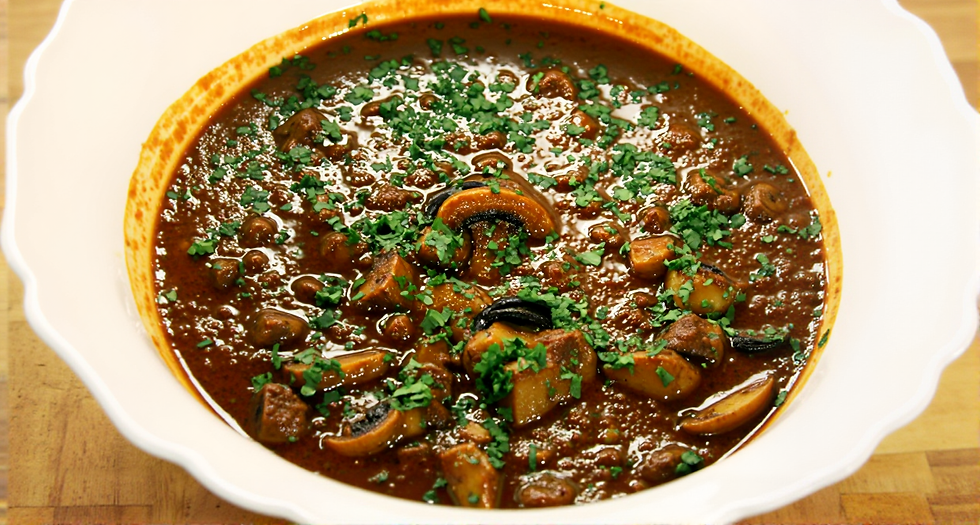Taste of the Wild: Exploring Goa's Coveted Monsoon Mushrooms
- Whispering Cafe & Store

- Aug 12
- 3 min read
"For those who know Goa beyond its sun-drenched sandy beaches, the south-west monsoon brings with it an entirely different kind of gold. As the rains wash the land clean, a cherished secret of Goan culinary culture emerges: the wild mushrooms, affectionately known as olmi. Their brief but spectacular appearance transforms local markets and kitchens, creating a buzz that rivals any local festival. It isn't just about food; but a century-old tradition, rooted in respect to nature and a delicate balance the forest ecosystem."

Goa's very own "Truffles" of the Monsoon: More Than Just a Mushroom
The term olmi is a blanket name for a variety of edible wild mushrooms, primarily from the genus Termitomyces. These aren't just any fungi—they grow in a unique symbiotic relationship with termites, often sprouting from sacred termite mounds revered by locals as the abode of the goddess Santeri. This makes them impossible to cultivate commercially and adds to their mystique and value.
The diversity of these mushrooms is a forager’s delight. Each species has its own flavor profile, texture, and name. For instance, you might find:
Roen Olmi: Translating to "forest mushrooms," these are the most common and widely sold variety, often found near termite hills in wooded areas.
Khutyali Olmi: Named for their distinct stems (khut means "stem" in Konkani), these mushrooms have a satisfyingly firm texture.
Toshali Olmi: Known for their light, almost beige-colored caps.
Sonyali Olmi: Meaning "golden mushrooms," these are easily identifiable by their vibrant yellow hue.
Chonchyali Olmi: These mushrooms are named for their unique shape, as chonch means "beak" in Konkani, describing their pointed cap.
The incredible range of shapes, sizes, and colors of these wild fungi is a testament to the rich biodiversity of the Western Ghats region.

A Culinary Tradition That Defines the Rains
The arrival of olmi sends every Goan kitchens into a frenzy of creativity. The firm, meaty texture and deep, earthy flavor of these mushrooms make them an ideal centerpiece for a variety of traditional dishes, especially for vegetarians looking for a seasonal treat or an additional edible option, to vegetarians during the month of 'Shravan' that falls just before Ganesh Chaturti. Some of the most beloved preparations include:
Olmi Xacuti: A Goan classic, this curry is a spicy and aromatic masterpiece. The olmi are cooked in a rich gravy made from a blend of roasted spices, fresh coconut, and chilies. The mushrooms soak up the complex flavors beautifully, making for a hearty dish that is best enjoyed with Goan pão (a local bread) or steamed rice.
Olmi Chilli Fry: This is a simpler, yet equally delicious, preparation. The mushrooms are quickly stir-fried with onions, green chilies, and a touch of black pepper, creating a smoky, spicy dish that highlights the mushroom's natural flavor and texture. It's often served as a side dish or a starter.
Olmi Tonak: Another popular curry, a tonak is a thick, fiery coconut-based gravy that uses a different blend of spices than a xacuti. It's a Goan staple for a reason and tastes phenomenal when made with these wild mushrooms.

The Sacred Connection and a Call for Conservation
The cultural significance of olmi goes way beyond any kitchen. The termite mounds from which they sprout are often considered the home of the sacred snake, a guardian of the earth, and the goddess Santeri. This deep reverence for nature has traditionally guided sustainable harvesting practices.






Comments